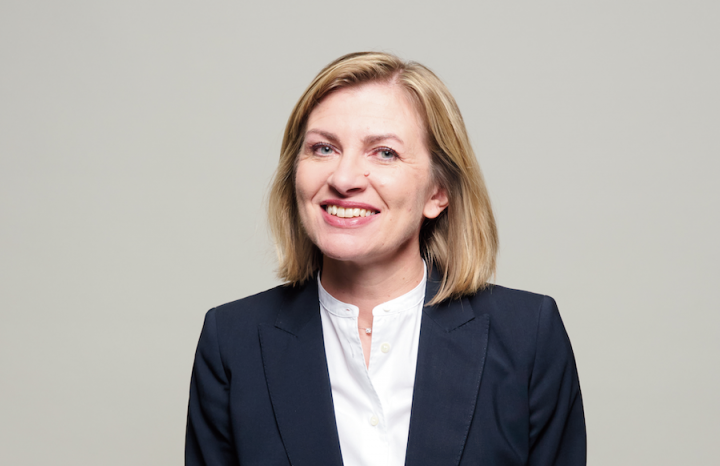
Lucienne Andring has spent years listening to families talk about money and what it really means to them. At Banque de Luxembourg, where she heads the key clients division, she is helping turn the handover of wealth from a financial transaction into something more intimate: a family transition.
Behind the polished boardroom doors where portfolios are reviewed and legacies weighed, Andring and her team are reimagining private banking as stewardship, of values as much as of capital.
As trillions in global wealth move from Baby Boomers to their heirs, Luxembourg’s private banks are feeling the tremors early. The country’s wealthy families are expected to transfer nearly one third of their 132 billion dollars in assets within five years, according to Capgemini’s latest World Wealth Report. At Banque de Luxembourg, that demographic and emotional shift is already shaping Andring’s day-to-day work, and redefining what continuity means in the world of private wealth.
Building trust early
If wealth transfer is a process, not an event, trust is its currency. At Banque de Luxembourg, that trust is cultivated long before inheritance takes place. “We involve the next generation well before transmission, listen carefully to their priorities, and tailor access, reviews, and solutions so they view the bank as a true partner,” Andring told Investment Officer.
The approach is timely. According to Capgemini, 94 percent of future heirs in Luxembourg plan to switch from their parents’ wealth manager within two years of inheriting. The risk of losing relationships, and assets, is real. Andring’s team aims to counter that impulse by integrating younger clients early, not just as future beneficiaries but as active decision-makers.
Technology may offer convenience, she acknowledges, but private banking remains grounded in human judgment. Digital tools can enhance communication, she said, “but they can never replace the trust that develops over years.” For Andring, the essence of private banking still lies in discretion, continuity, and a banker’s ability to see beyond balance sheets to family dynamics.
Growing interest in sustainability
Against the backdrop of the climate crisis and increased interest in ESG aspects in recent years, younger people are attracted by sustainability-linked investments. Banque de Luxembourg has indeed observed “a growing interest, especially among younger heirs, in incorporating sustainability preferences into their investment approach,” said Andring. If these preferences align with objectives and the risk profile, she explained, they can be integrated into mandates.
Philanthropy advisory
But investing for societal good can go further than just sustainability-linked investments. For wealthy families looking to make a deeper non-financial impact, Banque de Luxembourg provides philanthropy advisory. Philanthropic causes can include education, protecting disadvantaged communities, healthcare, or social entrepreneurship, and often depend on a family’s history or areas of expertise. “Our role is to transform this intent into a structured, operational framework through a six-step approach,” said Andring.
These six steps are: define a commitment profile, structure it, manage it, plan the commitment, identify a portfolio of projects, and monitor progress with reporting. “This ensures that philanthropic efforts are governed for the long term, with impact both tracked and communicated across generations.”
“Wealth is increasingly expected not only to sustain patrimonial growth, but also to carry meaning at the family level.”
Obtaining a financial return doesn’t mean people can’t have a positive societal impact. “It’s possible to align purpose with performance,” said Andring. “With carefully structured portfolios, investors can achieve competitive returns while advancing causes that matter to them, showing that performance and impact are not mutually exclusive, but mutually reinforcing.”
Broadly speaking, “both younger and older clients share the goal of preserving and growing their wealth,” said Andring. But their priorities may diverge. “Younger generations place greater emphasis on sustainability, transparency, and investments aligned with their values,” she added.
At the same time, Banque de Luxembourg sees that families’ objectives are expanding. “Wealth is increasingly expected not only to sustain patrimonial growth, but also to carry meaning at the family level. Where families wish to express their values, we integrate structured philanthropy pathways so that portfolio construction and purpose advance together rather than compete.”
Private assets: a question of risk appetite
Private assets have also come into the spotlight, particularly in Luxembourg. Finance minister Gilles Roth in early October announced that Luxembourg’s sovereign wealth fund would invest up to 15 percent of its portfolio in private markets.
Interest in private assets, often seen as riskier due to a lack of liquidity and other challenges, isn’t necessarily governed by age. It comes down more to preferences. “It’s not a question of generation, but of mindset,” said Andring. “Risk appetite, including interest in private assets, is evaluated on a case-by-case basis, in line with each client’s objectives and profile.”
This is the first in a three-part Investment Officer series examining how Luxembourg’s private banks are navigating the great generational wealth shift.